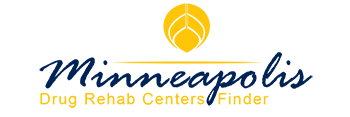Prescription Drug Abuse in Minneapolis, MN
Prescription drug abuse is a serious problem all around the world, and has been classified as an epidemic in the U.S. by the Centers for Disease Control (CDC). An estimated 2.1 million Americans suffer from substance use disorders that stem from prescription drug abuse of opioid medications alone. Unintentional drug overdoses have been on the rise for several decades, and prescription drug abuse accounts for more drug-related deaths than all illegal drugs combined. In addition, there is an increasing amount of evidence to suggest that there is a causal relationship between increased prescription drug abuse and heroin abuse.
Responding to an Epidemic
As the problem of prescription drug abuse is complex and multi-faceted, so our response to it must take many factors into account. The driving factors of prescription drug abuse and addiction range from individuals seeking their next high, to overprescription by medical providers, to the benefits of pharmaceutical sales for pharmacies and drug manufacturers. The ease of obtaining these drugs and an increased level of social acceptance for self-medication and the recreational use of prescription drugs play big roles in the problem as well. Handling the situation appropriately requires a vast scope of knowledge, oversight, and finesse, as a balance must be achieved between providing effective medical treatment to those in need while minimizing the risks and collateral damage of high-volume prescription of potent medications.
The Addictive Nature of Prescription Drugs
Opioids, a class of drug frequently prescribed for relieving moderate to severe pain, account for a large amount of prescription drug abuse, addiction, and overdose. These medications provide users with a sense of well-being by targeting the area of the brain associated with pleasure and reward. Many opioid abusers try to intensify the effects by increasing the dose, altering the intended method of ingestion (smoking or snorting instead of swallowing) or combining the drugs with other types of mind-altering substances. These habits not only lead to tolerance, but also greatly increase the risk of users experiencing negative side effects.
Identifying Patterns of Abuse
Although any use of medications outside of that for which they were intended constitutes abuse, some signs in particular can serve as a warning that intervention may be needed to get a drug abuse problem under control. Any of the following can be reasons to suspect that help is required:
. Compulsive, non-medical use of prescription drugs
. Preoccupation with the effects of prescription drugs
. Drug seeking behavior (forging, stealing, or “losing” prescriptions, or obtaining similar prescriptions from more than one doctor at a time)
. Uncharacteristic mood swings, sleep disturbances, or restlessness
. Withdrawal symptoms in the absence of the drug’s use
It’s never too early to think about getting help, whether for yourself or for someone you know or care about. A primary care physician can be a good place to begin, as he or she will be able to assess the need for more intensive treatment options.
Let Minneapolis Drug Rehab Centers be your ultimate addiction guide. Just give our recovery advocates a call today at (612) 605-2271.


Leave A Comment